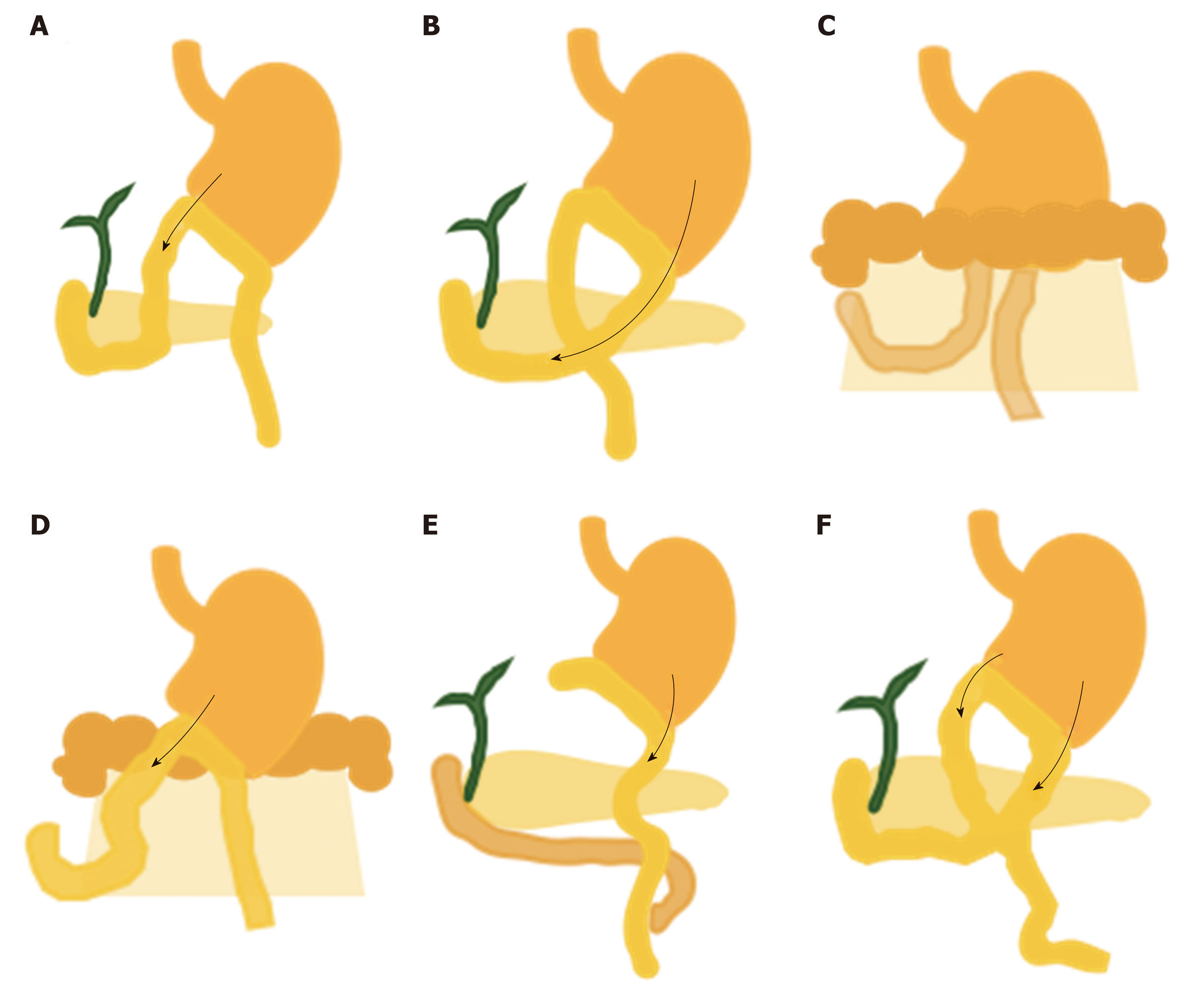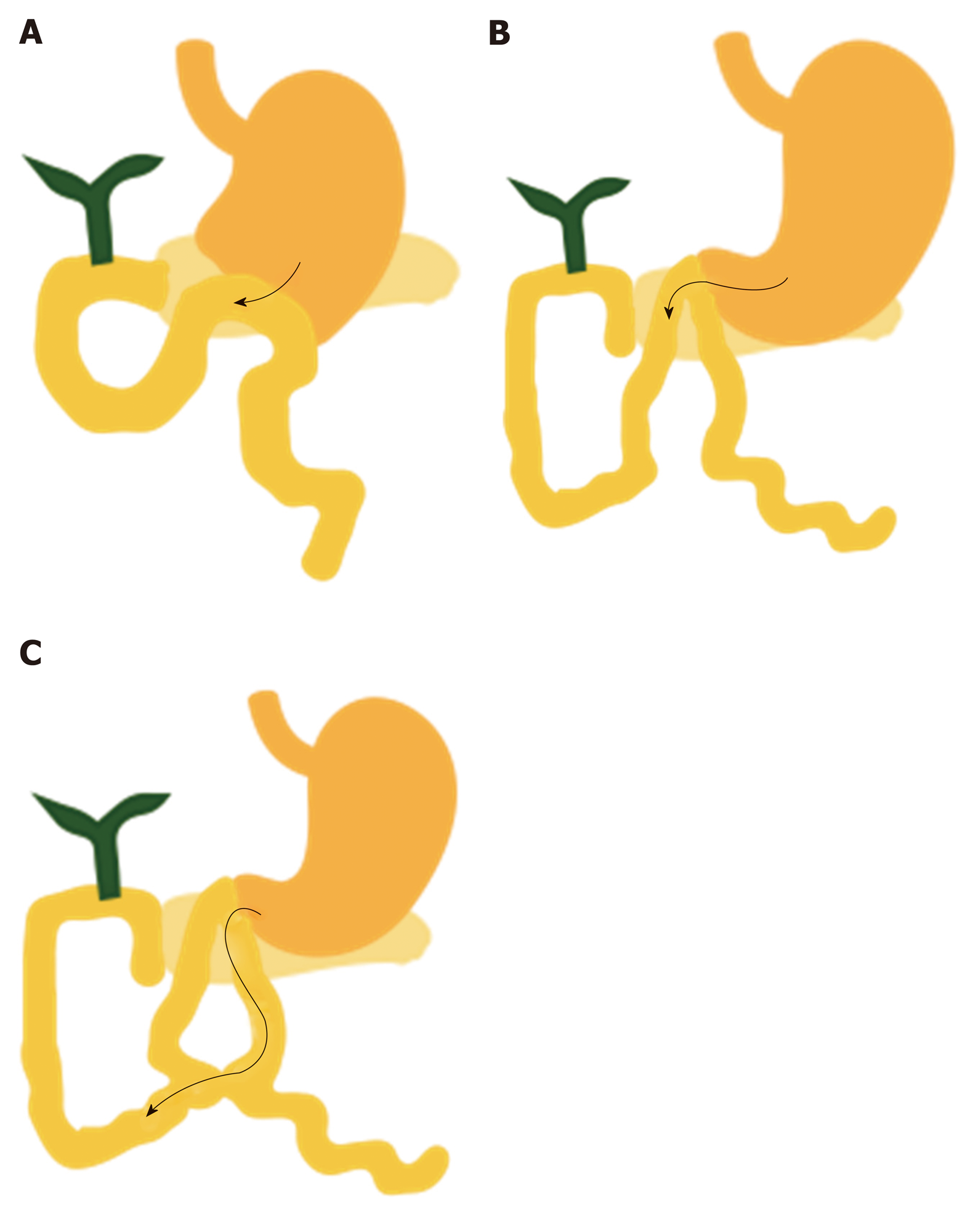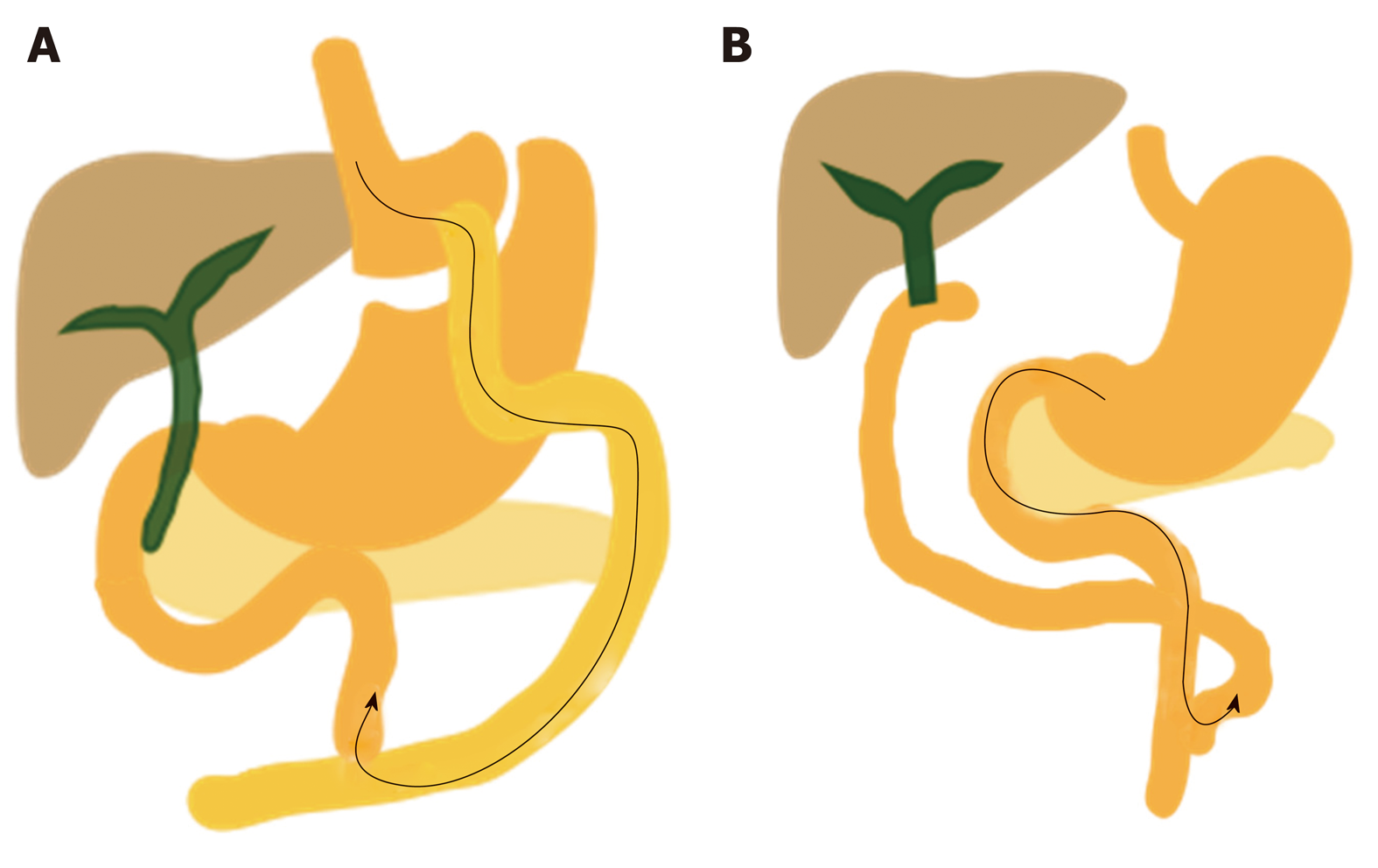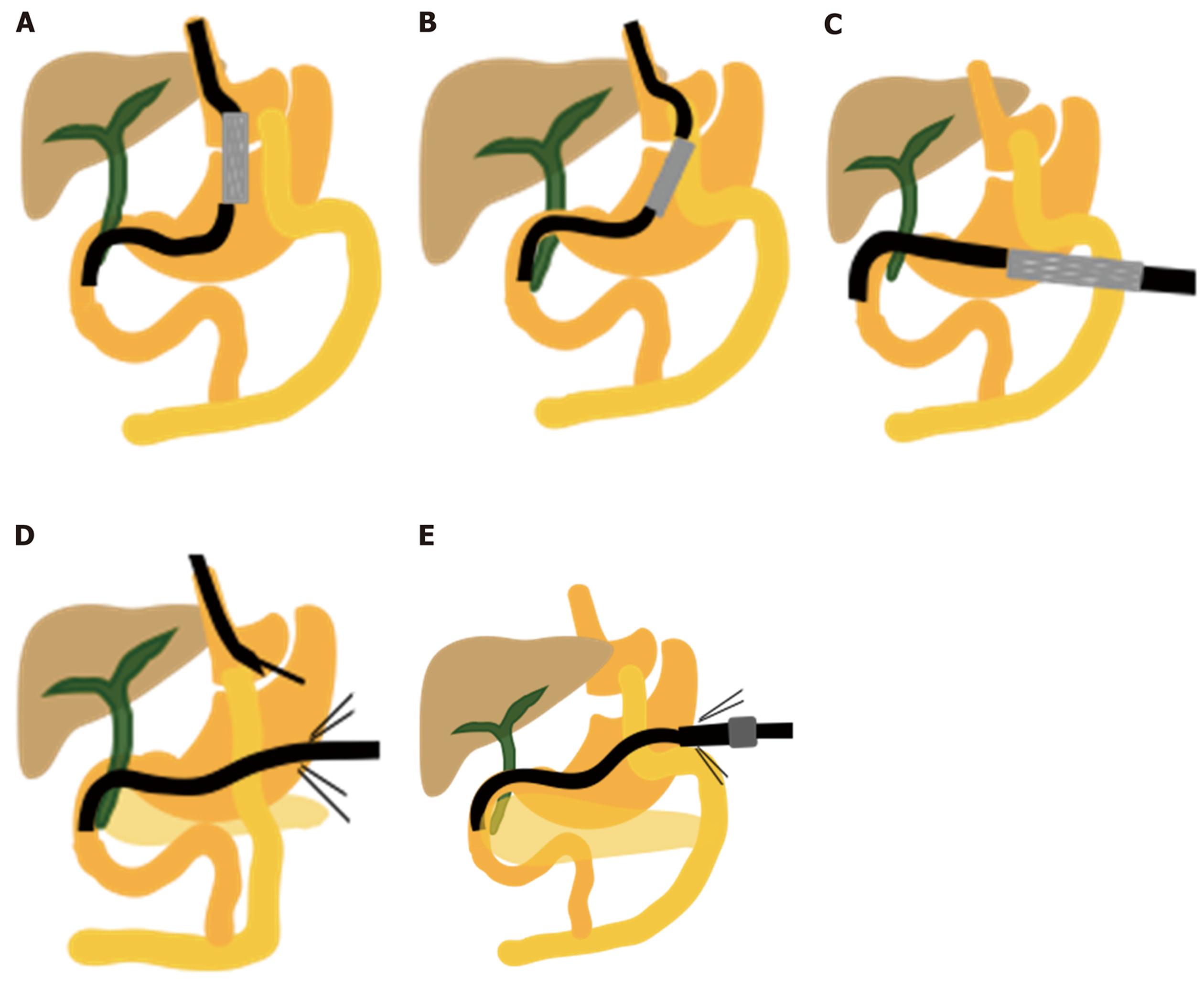Copyright
©The Author(s) 2019.
World J Gastroenterol. Jul 14, 2019; 25(26): 3313-3333
Published online Jul 14, 2019. doi: 10.3748/wjg.v25.i26.3313
Published online Jul 14, 2019. doi: 10.3748/wjg.v25.i26.3313
Figure 1 Billroth II gastrectomy and variations of reconstruction.
A: Antiperistaltic type. The entry of the afferent limb is located near the lesser curvature; B: Isoperistaltic type. The entry site is located near the greater curvature; C: Retrocolic reconstruction. The afferent limb is shorter than that in antecolic reconstruction; D: Antecolic reconstruction. The afferent limb is significantly longer than that in retrocolic reconstruction; E: Roux-en-Y reconstruction involves the longest limb among all Billroth II gastrectomy techniques; F: Braun jejunojejunostomy anastomosis creates a confusing endoscopic view to reach the afferent limb.
Figure 2 Various reconstructions of pancreaticoduodenectomy (Whipple’s procedure).
A: Conventional Whipple’s procedure; The afferent limb is near the lesser curve; B: Pylorus-preserving pancreaticoduodenectomy; C: Braun anastomosis may create a confusing endoscopic view.
Figure 3 Other types of reconstruction.
A: Roux-en-Y gastric bypass; B: Hepaticojejunostomy in liver transplant, pancreaticobiliary maljunction, or bile duct cancer.
Figure 4 Technique to identify afferent limb.
A: Intraluminal indigo carmine injection; B: CO2 insufflation guidance.
Figure 5 Endoscopic EUS-guided ERCP and laparoscopic-assisted ERCP in Roux-en-Y gastric bypass.
A: EUS-guided transgastric fistula by luminal-apposing metallic stents; B: EUS-guided jejunogastrostomy stent with conventional ERCP; C: EUS-directed transgastric ERCP for Roux-en-Y reconstruction; D: EUS-guided sutured gastropexy for transgastric ERCP; E: Laparoscopic-assisted ERCP. ERCP: Endoscopic retrograde cholangiopancreatography; EUS: Ultrasonography.
- Citation: Krutsri C, Kida M, Yamauchi H, Iwai T, Imaizumi H, Koizumi W. Current status of endoscopic retrograde cholangiopancreatography in patients with surgically altered anatomy. World J Gastroenterol 2019; 25(26): 3313-3333
- URL: https://www.wjgnet.com/1007-9327/full/v25/i26/3313.htm
- DOI: https://dx.doi.org/10.3748/wjg.v25.i26.3313













